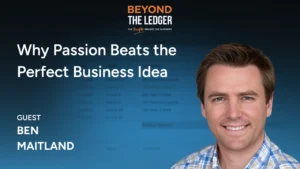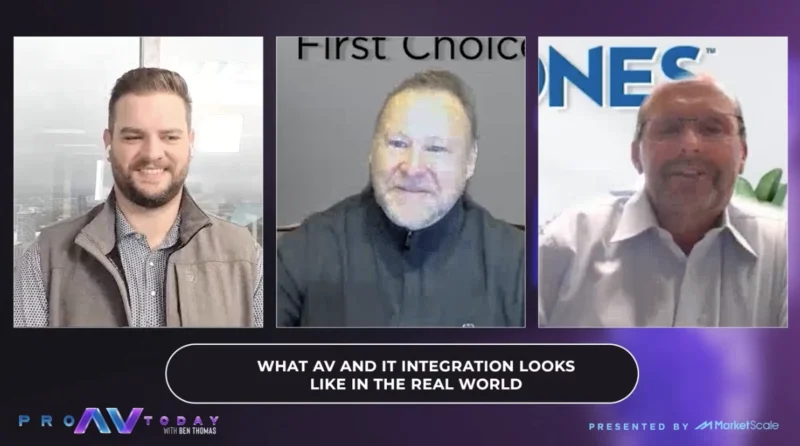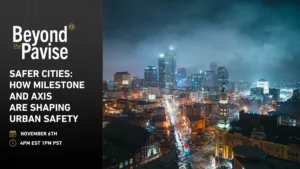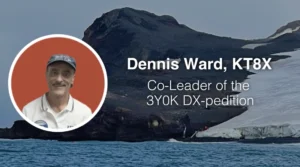How Technology has Empowered the Theme Park and Attractions Industry
Watch below as Michael Carroll of Dynamic Attractions joins Pro AV Today host Ben Thomas to discuss some of the ways that technology is empowering and enabling the modern attractions industry.
*transcript is auto-generated*
BT: Hey, everybody, welcome back to Pro AV Today. As somebody who’s been in the industry for quite some time, there are very few things left that make me go, Wow. But I feel like every single time I step off an attraction at a theme park these days, my mind is blown and I’m left speechless. And whether that’s Cosmic Rewind at Disney or something like transformers at universal, it’s something really that there’s been an increase in demand for technology and innovation in the attractions industry. And, you know, one of the guys responsible for quite a bit of that is my next guest here on pro AV. Today we’ve got Michael Carroll, VP and executive producer over at dynamic attractions. Michael, Thanks so much for hopping on the show.
MC: Thank you very much for having me, Ben. It’s a great pleasure. And I’m looking forward to sharing some insights with your audience and also with you.
BT: You know, Michael, when I say the words theme park, it’s almost like a trigger phrase for people. They might think of these dingy carnival rides and corndogs and things like that. But the reality is the attractions and entertainment industry is 5 or six generations beyond that. Right give our listeners just a quick overview. Where is the attractions and entertainment industry today?
MC: Yeah, I think that’s a really interesting area. Most people in general, when guests go to an attraction, I think they’re really they’re wowed by the experience, but they don’t spend a lot of time thinking about all the different elements that have come together to actually create that experience. And it’s amazing the level of complexity that we all now face, trying to push further and further into that experience, the really wild guess, but to wild them safely and repeatedly. And I think as we push forward, the technology that we are pulling in is coming from all kinds of different development areas. We have things that are happening from military. We have things that are happening from industrial. One good example might be for our robot arm ride that we have at dynamic that’s actually based on a kuka robotic arm, which is primarily used for building automobiles in the automobile industry. And here we are completely repurposing it for someone’s entertainment to make them thrilled and excited.
BT: Yeah, absolutely. You mentioned kuka. It’s a company I know very, very well. They do so much. You talked about the automotive industry being one of their primary industries. But whether it’s the attractions of the entertainment industry or robotic bartenders, there’s so many fun applications for technology like that today. And, you know, kind of speaking to that technology, a lot of times the technology is almost pulled out of a traditional use case, right, where it’s now implanted into either a ride or an experience where it’s creating this are called the intersection of physical and digital experiences. But talk a little bit about how you’re able to design with that technology in mind, but maybe outside of the traditional use case, kuka being a good example of that.
MC: Yeah, it’s always we are always on the lookout for different cutting edge technologies that can be really stretched or applied to the guest experience, and sometimes we find them in very unlikely places. Kuka is a really good example for that, where you have something that is used primarily for an industrial application that now is being used for entertainment purposes. As we as developers of attractions and experience, we’re always looking to push that boundary. And the only places that we can find things that help us push the boundaries are generally out in research and development laboratories, and a lot of that is happening around military applications or industrial applications. And some of it things that are coming up now are really interesting and exciting. You know, you look at what’s happening in the space industry and SpaceX in particular is leading that. But there is a whole huge micro industry that’s developing there and the technologies that they’re developing and applying, especially for things like materials research, where they’re putting satellites and other objects out in space under incredibly harsh conditions. And as designers and developers, you put something outside here in Florida or California or a lot of the places that we actually develop theme parks for. We have some of the harshest weather conditions there. They’re beautiful for the guests. It’s beautiful, bright sun. Sometimes we have heavy rain, but and a lot of times it’s near the seaside. So it’s very corrosive, all of those elements coming together. Meaning that we have to pay a lot of attention to the materials that are used along with. The other thing that’s always interesting is durability, because you find that if guests spend a little bit too much time in line, sometimes they get a little bit fidgety and things that you thought would be stuck to the wall really well suddenly find a way to come off the wall. So aside from the big improvements that we’re always looking for in technologies, we’re also looking for those smaller improvements as well to be able to maintain that high quality guest experience that we put out on day one.
BT: Well, you talk about durability there in as a lifetime “av”er I’ll be fully transparent. We’re not an industry that’s always necessarily known for the most reliable technology. We as much as we try, right. There’s always there’s always an excuse whether it’s power or you talk about conditions or long term use, things like that. But, you know, the way that you guys use specifically AV technology, things like projectors and speakers and all sorts of different display devices, they’re kind of pulled out of their natural environment. It will call it in many cases, not designed to be on 20, 22, 23, 24 hours a day. How do you work with the manufacturer on that? Is it something that happens a little bit more down the line or is that something that you guys are collaborating directly with the manufacturer on?
MC: Oftentimes it happens a little bit later down the line. And I think 1 May be good use case example for that and it may not be one that a lot of the viewers are familiar with. Yet in Saudi Arabia, there’s a development project going on that’s called cadia and one of my associates is working in that particular project and he’s head of technology and development. So they came up with this idea. One of the focal points of cadia is there is a giant cliff rock face and somebody said, you know, that thing is like a giant projection screen. We need to do projection mapping on that. So here they are literally in the middle of the desert with nothing in the infrastructure for the facilities. And everything is just beginning to go in now. So now you’re going to put 25 very big finicky projectors out in the middle of the desert with crazy power conditions. And we want to put something together that’s going to be an absolutely spectacular show and it’s going to happen every single night. Wow talk about crazy conditions. So in that case, that was the projectors I believe were supported by Christie. And Christie worked very closely with them to develop the environmental enclosures that were necessary for the projectors to maintain their life expectancy and also their quality. But it turned out to be an absolutely tremendous project. It’s really beautiful. It’s gotten a lot of accolades, and it’s in the Guinness Book of World Records now as the largest projection mapping that has been done to date.
BT: And that is now I feel like I’ve got to fly and go see that thing because I am the world’s biggest fan. I feel like a projection mapping, and especially down here in Texas, we get to see it quite a bit on buildings and Hills and all kinds of fun stuff. But that sounds like something that I need to check out for sure. And it’s a great point that you bring up, right? The guest does not care that you’re in the desert and can’t run power or weather. Maybe even you’re in Florida. Right the guest doesn’t care whether it’s been raining nonstop for four days. They expect a show and they expect everything to be functioning. And, you know, let’s talk about that guest experience for a minute, because obviously, at the end of the day, the guest experience is paramount in attraction design. What are some of the things that you’re seeing from a guest perspective specifically in the attraction space?
MC: I think one of the things that, you know, we as designers and developers have been responding to what really the guests have been telling us that they want. And lately what they’ve been telling us they want is a very immersive environment. You know, as the Star Wars lands at Disney, the Wizarding world’s at Universal and the new Star Wars hotel, these are all they’ve become more and more immersive. And I personally believe that for a lot of guests. They really want to be able to escape into these worlds because the world we live in has a lot of challenges associated with it. And to escape from those challenges sometimes is really important for the guests. So that’s what they’re looking for. Now, a lot of times when you go online for a digital experience into those worlds. They have the opportunity to interact with people far away. But what about their family? So what we do, I think probably more than a lot of the digital environments do, is we provide an immersive interactive environment where you can share it with your whole family together all at one time. And one of the other areas that you can have virtual experiences and maybe smaller physical reality experiences. We don’t get to share them quite as fully. And that sharing is still, I believe, an important part of our social fabric, whether it’s sharing with our families or sharing with our friends. We want to go somewhere that’s unique and someplace that we can immediately share with our friends and family, but then also to be able to extend that and put it up online and share our experiences with our friends outside of that sphere. And if you go into a virtual world, you can connect people from far away and you can share a common environment. And it’s a lot of people are having great fun with that. It’s a way, I think, that. You know, one of the things that I see I’ve done a lot of international work. And lately, because of all the different factors that have been going on over the last couple of years throughout the world, I see what used to be globalization turning into localization in a physical sense. Now, I don’t really see that happening. So much in the digital realm at this point because people are still connecting from other countries and players from all around the world will get together. And I think that’s a great thing. The problem is because of all of the physical issues, they can’t necessarily come together in a singular physical location. So there’s an interesting opportunity that exists there. I think for the theme entertainment future is how we start working on integrating that virtual experience that’s online with a physical experience that’s in a park and being able to bring people together. In both realms. And I know when we talk about the metaverse, that’s kind of the attempt at it. But the metaverse is really focusing a little bit more on the virtual than on the physical. And I think we in the themed entertainment business, we want, we’ve always been really good at presenting that physical space and being able to immerse the people and our guests in that physical space. So now one goal is to try to bring those two worlds together and create something that can extend that reality beyond those boundaries.
BT: Well, the great thing about the technological advancements in theme parks, that attraction specifically is really it feels like a lot of the first generation of that was, heck, just getting Wi-Fi in the parks. Right? that was such a big challenge for such a long time. And then you talk about mobile ordering, virtual queues, things like that. And even, you know, you look at a tool like Disney’s Magic band plus where you’re now able to collect bounties in real time, share it online, you’re able to interact with your families and create those digital experiences. I tend to agree that sounds exactly like we’re going. And, you know, even from Park to park, right. The expectation is that there’s got to be some sort of connectivity, not only on site but off site as well. So it’s such an interesting world that we live in because the guest is driving so much of that. And their desire for what we call constant connectivity and constant interaction really has morphed how we’re creating these spaces. And Michael, I’ll give you the last question here. Everybody always is asking what’s next? Right what’s next in themed lands? What’s next for ride technology? But I’ll just hand it to you. This what’s in the next 5 to 10 years that you think is going to be the next big thing in the attraction space specifically?
MC: I really think the direction that we were just discussing where we try to figure out how to bring together the metaverse and let’s call it the physical verse. It’s the Earth verse. That’s a good one. Yes because I think that there’s always going to be I hate I don’t want to say always there is a strong possibility that what we have all experienced with COVID is not going to be the last time that something like that happens. Now, when something like that happens, being able to physically gather becomes a challenge. So then, as we saw during these last few years, the proliferation of online experiences and ways that we could interact with each other virtually throughout the world really mushroomed. It became much more than it, I think it ever has been, and it happened faster than I think anybody ever considered that it would. One of the interesting things that I could be misquoting this, but I believe it’s pretty close is that, you know, when Facebook decided to change their name to meta and kind of change the way that the company was working, what my understanding is, is that they actually had commissioned a report to try to look at their user base, which is ginormous. It’s billions of people and find out how that user base is actually changing. And what they were discovering was that more and more, especially of the young people that were getting involved in a lot of the massive multiplayer games of different varieties, instead of using Facebook for their communications, they were going more and more into that fully immersive gaming environment and they were staying in that environment and Facebook was actually losing them to that environment. So Facebook changed the meta to try to steer the ship in a different direction, to be able to recapture those users before too many of them got away. Now, when you think about our guests going in and living inside of the metaverse and living inside of games and all of the experiences that they can have, they’re. You know, what comes to mind for me is there was a movie that was done many years ago that was based on a pretty famous book called Ready Player one. And ready. Player one really tried to demonstrate that you could take that virtual experience and combine a physical experience to make it an incredible experience. So right now, a lot of people have tried in a lot of different companies have tried to develop different types of attachments and elements that would allow you to feel more like what you’re doing inside of the metaverse in a physical way. Because we all need that. We still need the physical interaction. You know, a hug is a great thing if you can’t feel somebody hugging you. It’s something missing in the social interaction. It’s just it’s part of human nature. So I think we can offer the hug because we create physical realms and physical realities where guests can go and interact with a cosplay character from their favorite game that is doing physical interaction with them. But I think we can take it further as well in that if you’re inside of a gaming experience and you’re doing something crazy like flying or you’re inside the head of a giant robot running around. Certainly visually, when you get the cues, you can trick your mind into feeling like that’s what you’re doing. But it’s not until your body actually starts feeling the sensations that you are really physically fully immersed in that environment. And I think that’s where the convergence of the metaverse and the physical come together, and that’s going to create some really interesting opportunities going forward. And there we’re going to be out on the technical bounds to try to accomplish that.
BT: Well, Michael, I love I love to hear that because the creative perspective and understanding where we’re going as an attractions community really helps us as the actual technology manufacturers and integrator partners helps us better serve the creative side and better serve at the end of the day, the guests. So I love really the conversation we’re having. I’m sure we’ll find a way to get you back on the show because this is a topic that may deserve three or four different episodes. But Michael Carroll, I appreciate you hopping on the show today and joining us. Thank you very much. It was a great pleasure. Look forward to seeing you again and Thank you for tuning in. Join us again next week.








